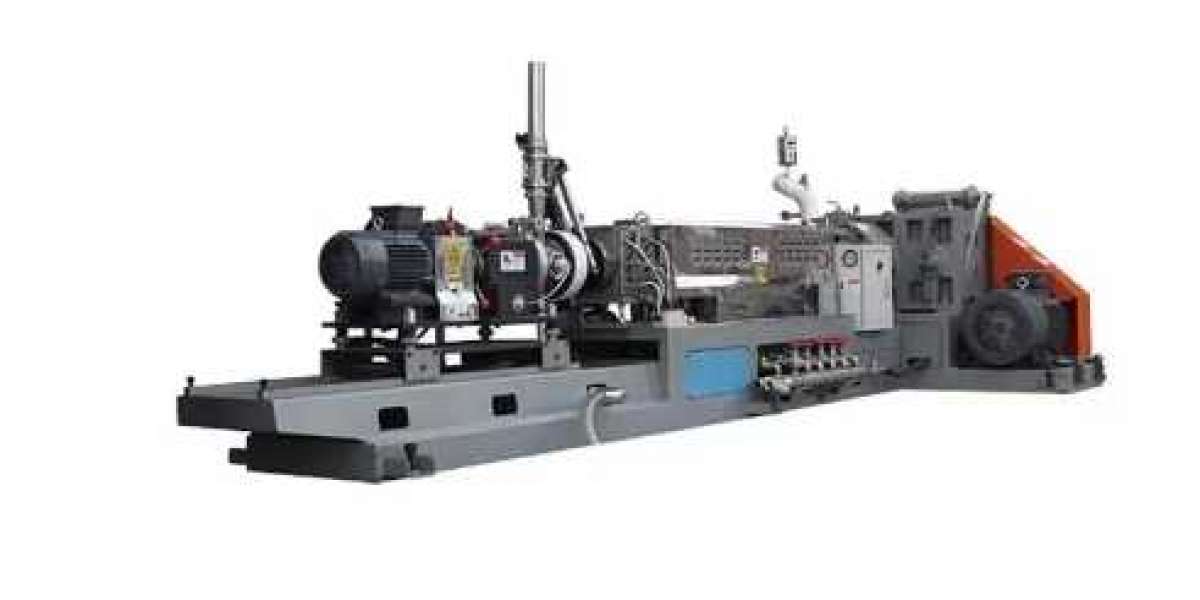Thermoplastic polyurethane (TPU) underwater pelletizersare essential in the polymer processing industry, especially for producing high-quality TPU pellets. Choosing the right pelletizer is crucial to ensure efficiency, reliability, and product quality. Feininger, a leading brand in polymer processing equipment, offers advanced TPU underwater pelletizers designed to meet the diverse needs of manufacturers. This article explores the key considerations and tips for selecting the right TPU underwater pelletizer for your needs.
Understanding TPU Underwater Pelletizers
The main machine of a TPU underwater pelletizer is the extruder system, which comprises the extrusion system, transmission system, and heating and cooling system. The extrusion system includes the screw, barrel, hopper, head, and die. The extrusion system molds the plastic into a uniform melt and continuously extrudes it through the screw under pressure.
Feininger’s TPU underwater pelletizer system incorporates advanced thermal relative edge formwork technology, ensuring continuous heating of the material carrier. This technology prevents the melt from condensing in the die hole and is insensitive to pressure fluctuations, making the pelletizing process more reliable and efficient.
Key Considerations for Choosing a TPU Underwater Pelletizer
1. Extrusion System Quality
Screw and Barrel Design
The design and quality of the screw and barrel are crucial for efficient plasticizing and uniform melt formation. A well-designed screw and barrel ensure consistent pressure and temperature control, leading to high-quality pellets.
- Tip: Choose a pelletizer with a robust and precision-engineered screw and barrel to ensure efficient and consistent extrusion.
2. Thermal Management
Thermal Relative Edge Formwork Technology
Effective thermal management is essential to prevent melt condensation in the die holes and maintain a stable pelletizing process. Feininger’s thermal relative edge formwork technology provides continuous heating and prevents condensation, ensuring a smooth and reliable process.
- Tip: Opt for a pelletizer with advanced thermal management technology to ensure consistent pellet quality and prevent process disruptions.
3. Pressure Stability
Sensitivity to Pressure Fluctuations
A good pelletizer should not be sensitive to pressure fluctuations in the extruder, as these can affect pellet quality and process reliability. Feininger’s TPU underwater pelletizers are designed to handle pressure fluctuations effectively, ensuring a stable pelletizing process.
- Tip: Ensure the pelletizer you choose can maintain stable operation even with pressure fluctuations, enhancing reliability and efficiency.
4. Water Treatment and Drying Systems
Efficient Water Treatment and Drying
Efficient water treatment and drying systems are essential for maintaining pellet quality and reducing maintenance costs. Feininger’s systems offer continuous filtration of process water, quick disassembly of filters, and efficient drying, making maintenance easier and reducing downtime.
- Tip: Look for pelletizers with efficient water treatment and drying systems to ensure high-quality pellets and lower maintenance costs.
5. Flexibility and Adaptability
Adaptability to Different Production Requirements
A flexible pelletizing system that can easily adapt to different production strips and material changes is beneficial for increasing production flexibility and efficiency. Feininger’s TPU underwater pelletizers are designed to be easily adaptable to various production requirements, allowing for quick changes in material and color.
- Tip: Choose a pelletizer that offers high flexibility and easy adaptability to different production needs, enhancing overall productivity.
Tips for Selecting the Right TPU Underwater Pelletizer
1. Assess Your Production Needs
Understanding your specific production requirements, including the types of materials processed, production volume, and desired pellet quality, will help you choose the right pelletizer.
2. Consider Long-Term Costs
While initial costs are important, consider the long-term costs associated with maintenance, energy consumption, and potential downtime. A high-quality, efficient pelletizer may have higher upfront costs but lower long-term expenses.
3. Evaluate Manufacturer Support
Choose a reputable manufacturer like Feininger that offers excellent customer support, training, and maintenance services. Reliable manufacturer support can make a significant difference in the long-term performance of your equipment.
4. Look for Advanced Features
Advanced features such as precise thermal management, pressure stability, and efficient water treatment can significantly enhance the performance and reliability of your pelletizer. Invest in a machine that incorporates these advanced technologies.
5. Request Demonstrations and References
If possible, request demonstrations of the pelletizer in operation and ask for references from other users. Seeing the machine in action and hearing about others' experiences can provide valuable insights into its performance and reliability.
Conclusion
Choosing the right TPU underwater pelletizer is crucial for optimizing your polymer processing operations. Feininger’s advanced pelletizers offer numerous benefits, including superior thermal management, pressure stability, efficient water treatment, and high adaptability. By considering these key factors and following the provided tips, you can select a pelletizer that meets your production needs and ensures high-quality, reliable pellet production.
For more information on Feininger’s TPU underwater pelletizers and how they can benefit your operations, please contact Feininger or visit our website. Enhance your polymer processing efficiency with Feininger’s state-of-the-art equipment.







